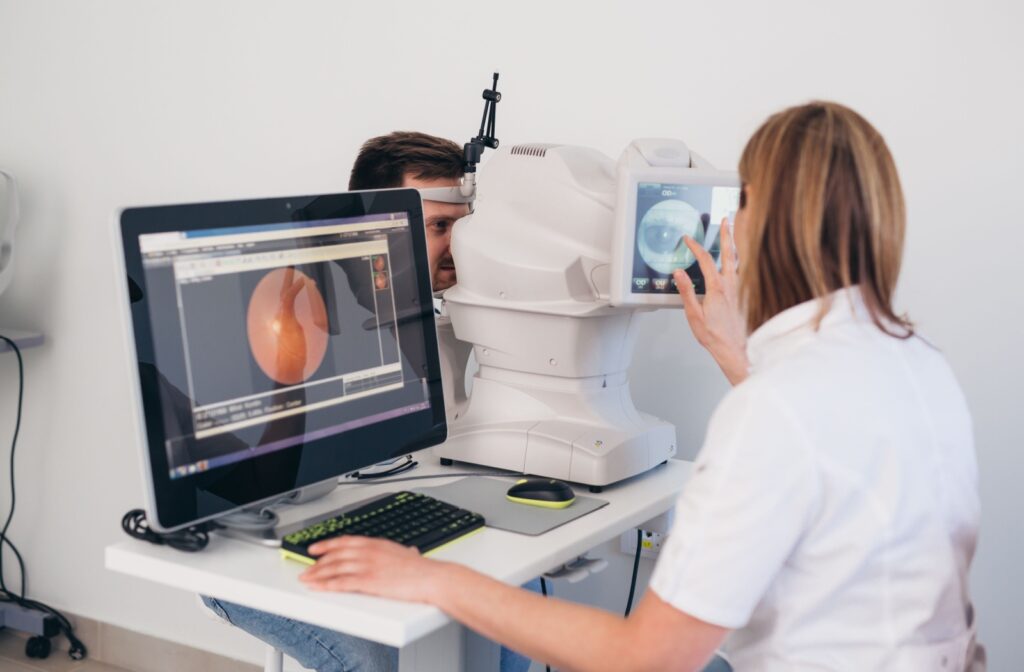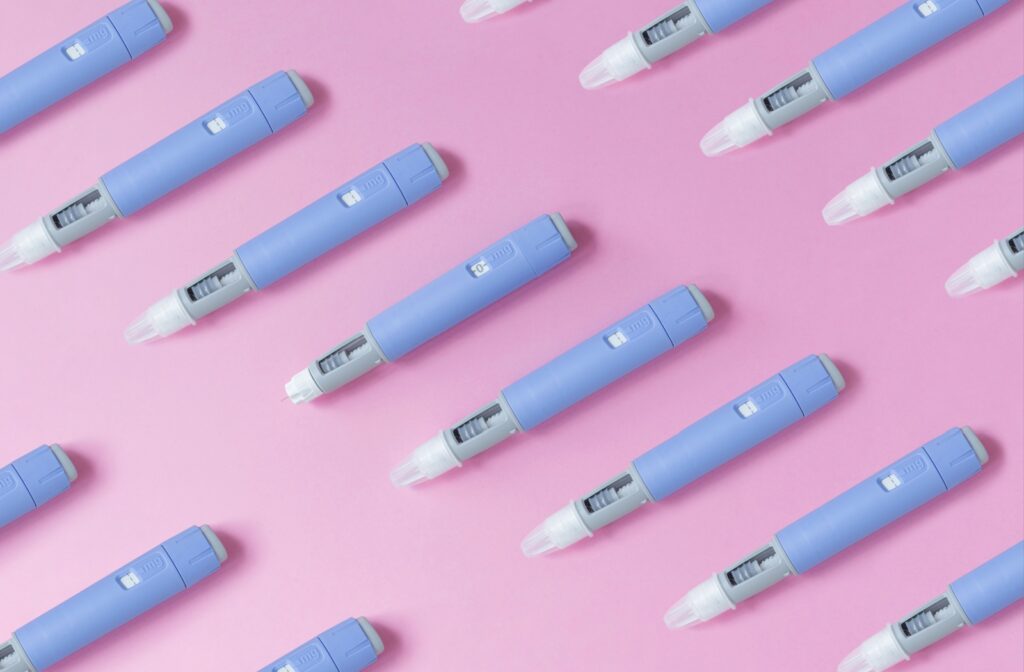Since the body is an interconnected network, health conditions and medications can influence various aspects of this system. Diabetes, for instance, can affect vision and overall eye health, increasing the risk of developing serious concerns.
Ozempic has been dominating the wellness sphere for the past few years. More than helping people with Type 2 diabetes manage their blood sugar levels, this “miracle” drug is renowned for supporting others in their overall health goals.
So, where does Ozempic, a class of medications known as GLP-1s which help manage diabetes, fit into this equation?
Ozempic, like any medication, comes with its own list of side effects, but vision problems are not one of them. Some people do report temporary changes in their vision when they first start taking Ozempic, but these likely stem from changing blood sugar levels in the body.
With that said, if you experience any persistent vision concerns or alarming symptoms, especially after taking Ozempic, please visit your eye doctor immediately.
The Link Between Ozempic & Visual Health
We currently don’t know of any direct links between Ozempic and vision problems.
Type 2 diabetes, a general health condition this medication helps manage, does carry inherent risks for your eye health. Medications like Ozempic can sometimes indirectly influence conditions tied to diabetes or other preexisting health issues.
Diabetes & Eye Health
Having diabetes can increase a person’s risk of developing several eye conditions, including:
- Diabetic retinopathy: A condition where high blood sugar damages the blood vessels in the retina.
- Diabetic macular edema: A buildup of fluid in the macula, leading to blurry or distorted vision.
- Cataracts and glaucoma: People with diabetes are more likely to develop these 2 eye diseases.
Although managing diabetes can help reduce the risk of developing these concerns, it does not eliminate them entirely. What’s more, is that diabetes-related vision changes can happen without noticeable symptoms until the condition progresses.
Not to mention, fluctuating or poorly managed blood sugar levels that can arise as your body adjusts to Ozempic (or any new medication for that matter) can exacerbate diabetic eye complications.
For this reason, annual diabetic eye exams are essential for people with diabetes, even if their blood sugar levels are well-controlled. A thorough evaluation lets your eye doctor cover all grounds, detecting even minor concerns early before they snowball into more complex cases.

Reports of Vision Changes: Ozempic
While we don’t know of a direct link for sure, some users report temporary visual changes when starting a GLP-1 medication, including Ozempic.
Fluctuations in blood sugar levels as the body adjusts to the medication may cause symptoms like mild blurriness. These changes are usually temporary and improve over time as levels stabilize; however, you should never ignore persistent or severe changes in your vision.
Potential Side Effects to Watch Out For
The direct side effects of Ozempic on visual health are unknown, but keep an eye out for the following symptoms. These could suggest a larger issue tied to diabetes or other health concerns:
- Blurry or distorted vision
- Sudden loss of visual clarity
- Increased floaters or flashes of light
- Difficulty focusing on fine details
If you experience any of these symptoms, especially if they persist, immediately visit your optometrist. Diabetes-related visual changes can lead to severe or permanent damage without timely intervention.
Supporting Your Vision with Ozempic
Under the supervision of your healthcare team (including your optometrist), you are free to take medications, including Ozempic. We’re not here to suggest otherwise.
We can, however, encourage you to take proactive measures to safeguard your vision and overall eye health. Ozempic can be the solution many people have been seeking, but misusing any medication has its risks. Don’t jeopardize your health or your vision.
As you adjust to this new medication (or others like it), here are steps you can take to protect your vision while improving your well-being.
- Maintain stable blood sugar levels: Fluctuating blood sugar can wreak havoc on your eyes. Monitor your glucose levels closely, particularly during the initial weeks of starting Ozempic.
- Stay committed to routine eye exams: Visit your optometrist annually for routine and diabetic eye exams. These visits can detect early signs of potential complications.
- Monitor eye symptoms: Keep a journal (or note) of any vision changes you experience after starting Ozempic. Bring this record with you to your upcoming doctor visits to help track trends.
- Manage your health: A balanced diet, regular exercise, and proper hydration can directly influence your eye health. Talk to your endocrinologist and optometrist about lifestyle adjustments tailored to your needs.
- Stay educated: Don’t hesitate to ask questions about your medications, their side effects, or how they interact with other health conditions. Knowledge empowers you to make informed decisions.
If you’re looking for additional guidance, your eye doctor can help. They have the knowledge, skills, and experience to help you take control of diabetes.
Safeguard Your Sight
Navigating the ups and downs of diabetes can feel overwhelming without the right support. Ozempic offers an effective solution for many, but it’s still important to keep an eye out for signs that could point to diabetes-related visual changes, especially if you’re starting on the GLP-1 journey.
At Total Vision Camarillo, our team provides personalized care to monitor diabetic eye diseases, manage symptoms, and offer tailored solutions. Proactively safeguard your vision and book an appointment for your routine or diabetic eye exam today.



